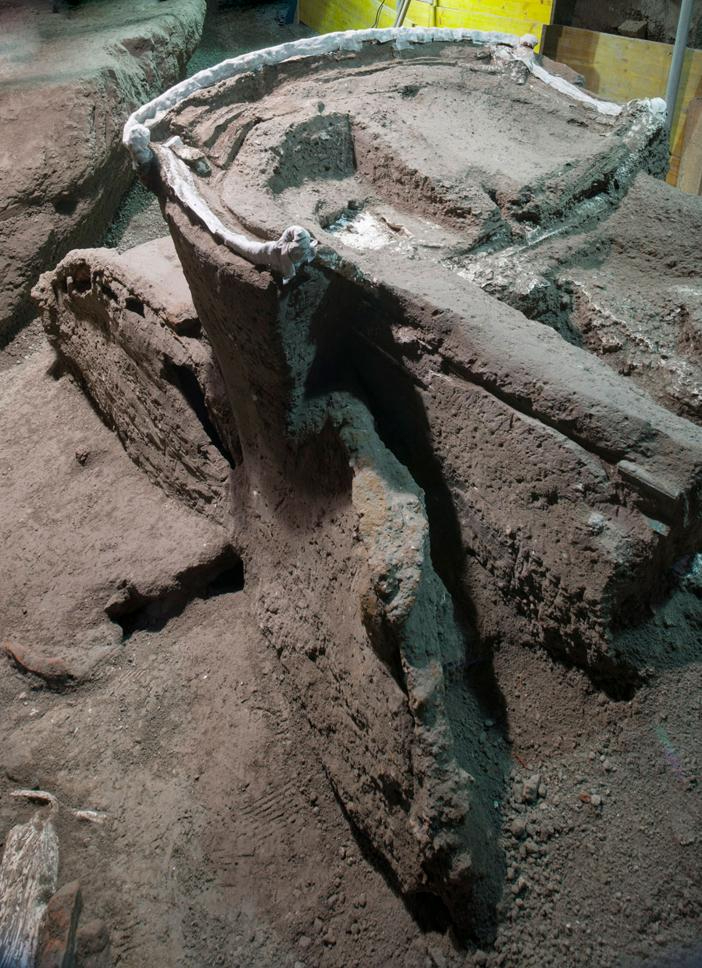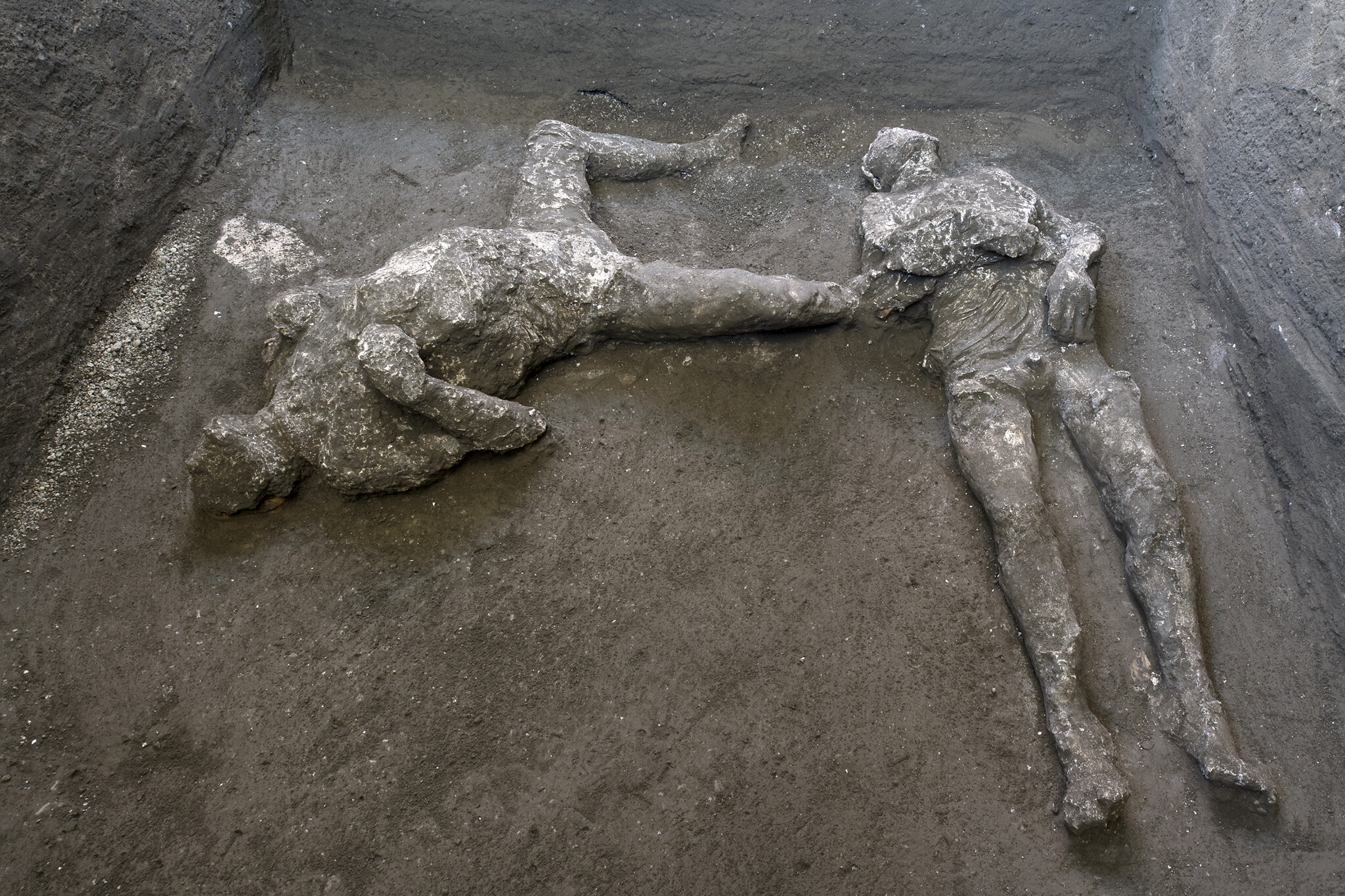An ornate Roman chariot has been discovered “almost intact” near Italy’s buried city of Pompeii, the archaeological park announced on Saturday, calling it a discovery with “no parallel” in the country.

A view of a chariot, with its iron elements, bronze decorations and mineralized wooden remains, was found in Civita Giuliana, north of Pompeii.
The four-wheeled processional carriage was found in the portico to a stable where the remains of three horses were unearthed in 2018, including one still in its harness.
Pompeii was buried in boiling lava when Mount Vesuvius erupted in 79 AD, killing between 2,000 and 15,000 people.
“A large ceremonial chariot with four wheels, along with its iron components, beautiful bronze and tin decorations, mineralized wood remains and imprints of organic materials (from the ropes to the remains of floral decoration), has been discovered almost intact,” a statement issued by the archaeological park said.
“This is an exceptional discovery… which has no parallel in Italy thus far — in an excellent state of preservation.”
The excavation site is known as the Civita Giuliana, a suburban villa that lies just a few hundred meters from the ancient city of Pompeii. The site is one of the most significant ancient villas in the area around Vesuvius, with a panoramic view of the Mediterranean Sea on the outskirts of the ancient Roman city.
Archaeologists last year found in the same area the skeletal remains of what is believed to have been a wealthy man and his male slave, attempting to escape death.

The casts of what is believed to have been a rich man and his male slave fleeing the volcanic eruption of Vesuvius nearly 2,000 years ago are seen in what was an elegant villa on the outskirts of the ancient Roman city of Pompeii.
The chariot’s first iron element emerged on January 7 from the blanket of volcanic material filling the two-story portico. Archaeologists believe the cart was used for festivities and parades, perhaps also to carry brides to their new homes.
While chariots for daily life or the transport of agricultural products have been previously found at Pompeii, officials said the new find is the first ceremonial chariot unearthed in its entirety.
The excavation is part of a program aimed at fighting illegal activity in the area, including tunnel digging to reach artefacts that can be sold on illicit markets.
Looters missed the room where the chariot had lain for almost 2,000 years, tunnelling by on both sides, the park’s statement said.
The villa was discovered after police came across the illegal tunnels in 2017, officials said. Two people who live in the houses atop the site are currently on trial for allegedly digging more than 80 meters of tunnels at the site.
A detail of the decoration of a chariot, with its iron elements, bronze decorations and mineralized wooden remains, was found in Civita Giuliana, north of Pompeii.
Specialists took great care to unearth the vehicle, for example by pouring plaster into voids “to preserve the imprint of any organic material” that had decomposed, it added.
The park said this had allowed it to emerge well preserved down to the imprints of ropes, “thus revealing the chariot in all of its complexity.”
“Pompeii continues to amaze with all of its discoveries, and it will continue to do so for many years yet, with 20 hectares (50 acres) still to be excavated,” Culture Minister Dario Franceschini was quoted as saying.
“It is an extraordinary discovery for the advancement of our knowledge of the ancient world,” added Massimo Osanna, outgoing director of the park.
“What we have is a ceremonial chariot, probably the Pilentum referred to by some sources, which was employed not for everyday use or for agricultural transport, but to accompany community festivities, parades and processions.”
Pompeii’s remarkably well-preserved remains have slowly been uncovered by teams of archaeological specialists.
It is Italy’s third most visited tourist site, drawing more than 3.9 million visitors in 2019. The ancient city was closed since the start of the pandemic and only reopened on January 18.





